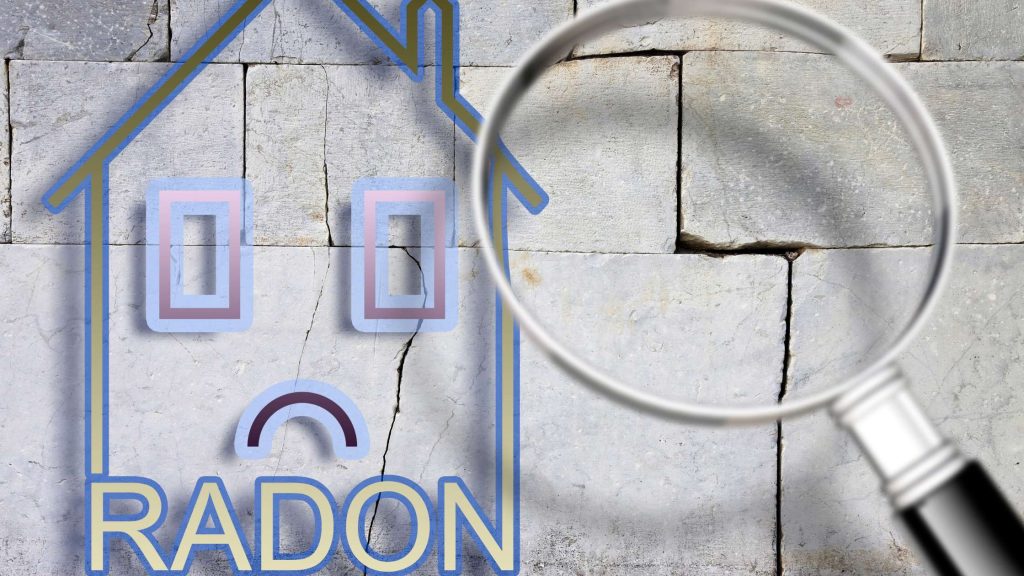Radon is an invisible, odorless gas that can be found in air and water across the United States. Radon is produced through the breakdown of radioactive elements in soil, rock, and water, making it a serious health concern.
While radon can be found in both air and water, it is important to understand its effects and the regulations surrounding it in order to maintain a safe environment and protect public health.
This article will provide an overview of the facts about radon and drinking water, including guidelines, health effects, and testing and treatment options.
Understanding Radon Regulations
There is no standard set for radon in public drinking water supplies, however, the Act mandated a study by the National Academy of Science to determine a suitable radon exposure limit. Currently, there are no federal regulations for radon in drinking water, but various states have their own radon regulations and standards.
Water departments or utilities are recommended to keep radon levels below the action level to address public health concerns.
It is important to be aware of all radon regulation compliance requirements to ensure safe water for everyone.
What Is Radon and Its Origins
Tracing back its origins, radon is a naturally occurring gas that cannot be seen, tasted, or smelled. It is produced by the breakdown of radioactive elements in soil, rock, and water, and can be found in all 50 states, albeit with varying concentrations.
Radon can enter homes through cracks in foundations, construction joints, and openings around sump pumps and drains, as well as through crawl spaces and, in some cases, well water. Sources of radon are found in soil, rock, and water supplies, and vary among towns and neighborhoods.
Radon levels can be tested to ensure that levels remain low and do not pose a health risk.
Ways Radon Enters Our Homes
In addition to entering homes through soil, rock, and water, radon can also enter through cracks in foundations, openings around sump pumps and drains, as well as construction joints and walls. Unwanted radon entry points include:
- Foundation cracks
- Openings around sump pumps and drains
- Construction joints and cracks in walls
- Crawl spaces
Radon sources should be identified and, when possible, sealed to prevent radon infiltration into the home. Other pathways for radon entry, such as well water, should also be monitored.
With proper prevention and treatment, radon levels in the home can be reduced.
Health Risks Linked to Radon
Long-term exposure to elevated radon levels increases the risk of lung cancer. Radon is a naturally occurring gas that cannot be seen, tasted, or smelled, and is produced by the breakdown of radioactive elements in soil, rock, and water.
Radon enters homes through cracks in foundations, sump pumps, and drains, and can accumulate in indoor air. While not everyone exposed to radon will develop lung cancer, the risk increases with elevated levels and the amount of time spent in the home.
Additionally, smoking and previous smoking history can further increase the chances of getting lung cancer from radon exposure.
Radon mitigation methods can help reduce radon exposure and associated health risks, and should be evaluated if necessary.
Evaluating Radon in Drinking Water
There are several methods for evaluating radon in drinking water. The most common way is through testing for radon contamination in both groundwater and indoor air. This helps to determine the total radon exposure risks.
Testing for radon contamination in both groundwater and indoor air is the most common way to evaluate radon in drinking water.
In addition, testing for radon in well water can help assess the need for radon mitigation methods.
Radon exposure risks should be evaluated based on air and water results.
Radon treatment systems should be appropriate for individual situations.
Importance of Testing for Radon
It is essential to test for radon to accurately assess the risk of exposure and determine if radon treatment systems are necessary. Advantages of early detection include the ability to plan for potential health implications and take proactive measures to mitigate risk.
Testing methods and procedures vary based on the type of radon present and the environment of the home. Professional assistance is recommended to ensure the accuracy of the test results and to properly interpret them.
Testing for radon is an important step in reducing the potential health risks associated with exposure to the element. With professional testing and guidance, individuals can make informed decisions and take the necessary steps to reduce radon exposure.
Treating High Levels of Radon
When high levels of radon are detected, treatment may be necessary to reduce the risk of exposure. There are several radon treatment options available, including:
- Radon mitigation techniques which can reduce radon levels in the home
- Installing a radon reduction system to lower the amount of radon entering the home
- Sealing cracks in the foundation and walls to prevent radon from entering
- Adding ventilation to the home to help remove any radon already in the air
High levels of radon can have serious health effects, so it is important to take action and reduce the radon levels in the home as soon as possible.
Ensure Safe and Healthy Water with SafeWell’s Radon Removal Services
Radon, a naturally occurring gas, is often unseen and underestimated in its potential threat to public health. The serious health hazards posed by radon in drinking water are grave, and thus, should not be taken lightly.
SafeWell is dedicated to protecting public health and preserving a healthy environment by providing comprehensive testing and effective treatments for high radon levels. They employ advanced techniques to eradicate radon, ensuring that your water is safe, healthy, and free from this harmful gas.
Their strategic approach underlines the significance of this critical issue and emphasizes the unseen but substantial impact radon can have on our lives.
For more information or to schedule a radon testing or treatment, feel free to contact SafeWell at 888-450-9355 if you’re in Massachusetts or 239-481-7867 if you’re in Florida.



